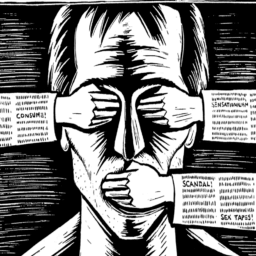INTRODUCTION
On 15th August 2021, while India was celebrating its 75th Independence Day, about 990 km from Delhi, the Talibans captured Kabul and overtook the Afghan government exactly 20 years after they were overthrown by invasion led by US. However, the current political situation of Afghanistan may have its roots to the Afghan Constitution of 2004.
Taliban – The Beginning
The Taliban is a Pashto word that means “students.”[1] It first appeared in 1994 in the Kandahar region of southern Afghanistan. Following the withdrawal of the Soviet Union and the consequent fall of the government, it was one of the forces fighting a civil war for control of the country. The Talibans were the allies of the Mujahideen which fought the war alongside US and received arms and aid as a part of the American policy. The Soviets were supporting the communist leadership who had attempted a gruesome coup against Mohammad Daoud Khan[2], the country’s first president, in 1978. Chaos reigned when the Soviets left in 1989, and by 1992, the country had devolved into a full-fledged civil war, with Mujahideen commanders warring for power and splitting Kabul, which was bombarded daily with hundreds of rockets from all directions.
By 1996, the Taliban had taken control of the capital and executed Najibullah Ahmadzai[3], the country’s last communist president, in a public square. It declared Afghanistan an Islamic emirate and began enforcing its interpretation of Islamic law, which is extremely stringent. Its six-year reign was defined by discrimination against ethnic and religious minorities, as well as restrictions on seemingly harmless hobbies and pleasures like music and television. Male athletes were directed what to clothe, and games were suspended during the five daily prayers. The Taliban was sanctioned by the United Nations in 1999 because of its affiliations to al-Qaeda, which was accused for the 9/11 terror attacks in America.[4]
The Invasion of Early 2000s
The US invaded the country on October 7, 2001, upon the refusal of the Taliban to hand over al-Qaeda’s leader, Osama bin Laden, who was underground in Afghanistan who was first allowed entry by former Mujahideen commander Abdul Rab Rassool Sayyaf. Bin Laden was widely regarded as the mastermind of the most devastating strikes on American soil. Within a few months of opening of a bombing campaign by the US and its allies, the Taliban were deposed, and in December, a new interim government led by Hamid Karzai was established. Three years later, a new constitution was promulgated, drawing inspiration from the 1960s reformed constitution, which saw the nation’s final king, Mohammad Zahir Shah, formally awarded women and ethnic minorities their rights.[5]
The so-called ‘Constitution’ of 1998
Mullah Mohammad Omar, the Taliban’s leader, gathered 500 Islamic scholars from across the country in 1998 to plan a new constitution for the country. A 14-page document was drafted by the scholars after three days of deliberation, the Taliban’s first and only attempt to codify its principles on power and administration. The document consolidated power in the hands of an “Amir ul-Momineen,” or faithful leader. The supreme leader was the head of state and wielded absolute power. This position was held by Mullah Omar.
The constitution didn’t say how such a leader would be chosen or how long he could hold the position. However, it said that the supreme leader must be a Sunni Muslim man. The supreme leader would appoint an Islamic council to function as the legislative and to enforce laws and policies. The Islamic council would oversee the government, which would be led by the head of the council of ministers, a quasi-prime ministerial position.
The constitution reflects the “Taliban’s intensely religious roots,” according to Andrew Watkins, a senior analyst for Afghanistan at the International Crisis Group, and reveals the importance placed on a “centralised authority” for a group that was “founded on a mission of restoring order to the country.”[6]
The Failed Constitution of Afghanistan
Afghanistan received a new constitution in 2004 following the successful toppling of the Taliban by a US-led multinational coalition in cooperation with local Afghan forces such as the Northern Alliance in 2001.[7] Due to the governance framework it established in Afghanistan, the 2004 constitution is accountable for many of the challenges that the country is facing now, including the Taliban’s retreat. History, as well as political and ethnic realities on the ground, had no bearing on it. These challenges were not immediately apparent, because activists and experts focused on constitutionally guaranteed civil and human rights rather than the less interesting but equally crucial subject of how to divide power.
The most critical shortcoming in Afghanistan’s constitution is that it established an overly centralized, unitary state in an ethnically diverse, mountainous country where local leaders, towns, and tribes frequently govern themselves. Even though Pashtuns, who make up the majority in the country’s eastern and southern regions, have historically been the country’s main ethnic group, no single ethnic group now constitutes a majority in Afghanistan. According to a 2020 census, Pashtuns make up 38.5 percent of the population, while Hazaras make up 24.5 percent, Tajiks make up 21.3 percent, Uzbeks make up 6%, and Aimaq make up 3.2 percent, among many other minorities.[8]
The 2004 constitution established a system in which the Kabul-based president picked provincial governors (there are 34), police officers, and “even schoolteachers.” While the president of Afghanistan is chosen through popular vote, local politicians are not. What was the rationale for this decision? The power of the executive was enhanced by the President’s Cabinet. Many Afghans believed that a strong central authority was required to avoid national disintegration, Iranian and Pakistani intervention, and warlordism during the period. Ethnic Pashtuns in the east and south were notably opposed to federalism and regional governance, whereas Tajiks, Hazaras, and Uzbeks were considerably more supportive of local autonomy while cautioning against a federalism that would permit warlords.
During the drafting process, the draftees had to consider demands from all sides, ranging from Islamic conservatives to the US, resulting in a constitution that incorporates certain conflicting features, such as enshrining both human rights and conservative components of Islamic law. However, in practise, “warlords,” as well as less-martial local players, were required to rule Afghanistan, which could not be administered in the centralised manner envisioned by the 2004 constitution. Because Afghans cannot elect their local governors, popular local governors – even former militia commanders – have been ousted by Kabul, as was the case with President Ashraf Ghani’s dismissal of the governor of Balkh, Atta Muhammad Noor, in 2018.[9] The legitimacy of the Kabul government has been further eroded as a result of this.
The constitution’s mandate for centralization extends not just to central-provincial ties, but also to the nature of the central government itself, as the National Assembly (Afghanistan’s parliament) and the president face imbalance of power.[10] Many political scientists think that parliamentary systems are better suited to fragmented communities such as those living in Afghanistan because they allow for government change between elections. The office of prime minister was included in in the initial draft of the Afghan Constitution, which was chosen by the Wolesi Jirga (Chamber of the People, the lower house of Parliament), but it was eventually removed in the final draft.[11]
Conclusion
The significant problems in the 2004 constitution are evident throughout Afghan history during the last two decades. While the present Afghan constitution was written with the intention of establishing a centralised administration because the drafters believed that such a structure would strengthen the country, it is possible that the contrary is now true.
The shortcomings of the Afghan state, as well as the expansion of the Taliban’s control area, illustrated that the government lacked legitimacy, especially when its own well-armed and well-trained soldiers refused to fight for it. Warlords with local bases of operations, on the other hand, had historically been more successful in combating the Taliban. This is not an argument for warlordism, but rather that the governments should have engaged with local populations and institutions in order to gain legitimacy. Afghanistan’s current political system is unsuitable for this purpose since the country’s location, history, and diverse population demand a less centralised system in which local people have greater voice in how they rule themselves.[12]
Now, with the Talibans back in power, the reign of terror lurks on the citizens and Afghanistan has once again become the epicentre of turbulence thanks to the failed governments, political system and the Constitution of the nation.
Author(s) Name: Mantesh Singh Dhillon (Rajiv Gandhi National University of Law, Patiala)
References:
[1] Al Jazeera, ‘The History of the Taliban’ (Asia News | Al Jazeera, August 18, 2021) <https://www.aljazeera.com/news/2021/8/18/this-history-of-the-taliban> accessed 20 August 2021
[2] Ibid
[3] Feroz E, ‘In Afghanistan, the Dead Cast a Long Shadow’ (Foreign Policy, July 1, 2020) <https://foreignpolicy.com/2020/07/01/hamdullah-mohib-mohammed-najibullah-afghanistan/> accessed 20 August 2021
[4] ‘Timeline: U.S. War in Afghanistan’ (Council on Foreign Relations) <https://www.cfr.org/timeline/us-war-afghanistan> accessed 20 August 2021
[5] “The History of the Taliban” (Note 1)
[6] Bezhan F, ‘Taliban Constitution OFFERS Glimpse INTO Militant GROUP’S Vision For Afghanistan’ (RadioFreeEurope/RadioLiberty, April 26, 2020) <https://www.rferl.org/a/taliban-constitution-offers-glimpse-into-militant-group-s-vision-for-afghanistan/30577298.html> accessed 21 August 2021
[7] Idea and Source E, ‘Constitutional History of Afghanistan’ (ConstitutionNet, August 18, 1970) <https://constitutionnet.org/country/constitutional-history-afghanistan> accessed 21 August 2021
[8] Pillalamarri A, ‘Afghanistan’s Failed Constitution’ (The Diplomat, August 12, 2021) <https://thediplomat.com/2021/08/afghanistans-failed-constitution/> accessed 22August 2021
[9] Rfe/rl, ‘Powerful Afghan Governor RESIGNS, Ending Standoff WITH GHANI’ (RadioFreeEurope/RadioLiberty, March 22, 2018) <https://www.rferl.org/a/afghanistan-powerful-governor-resigns-noor-ghani/29115699.html> accessed 22 August 2021
[10] Pillalamarri A, “Afghanistan’s Failed Constitution” (Note 8)
[11] Ibid
[12] Ibid
















